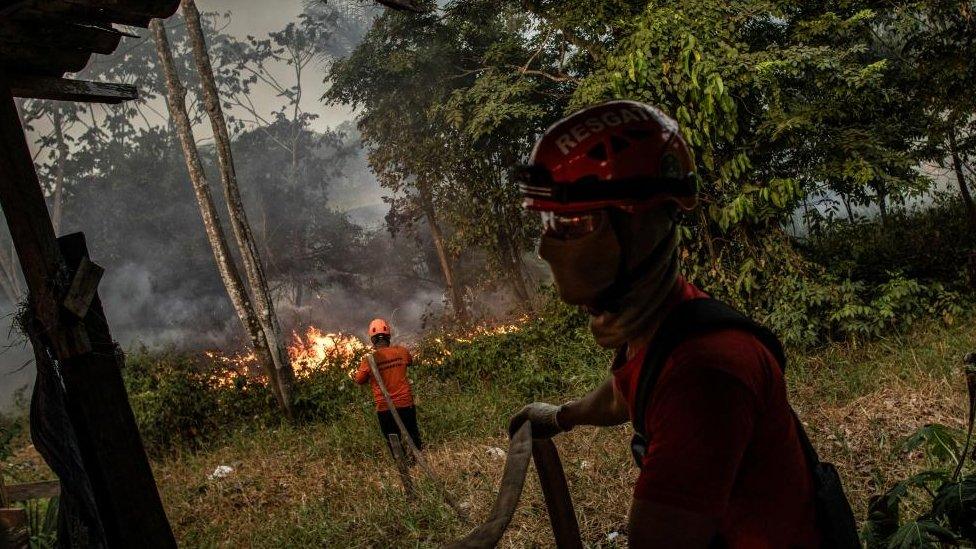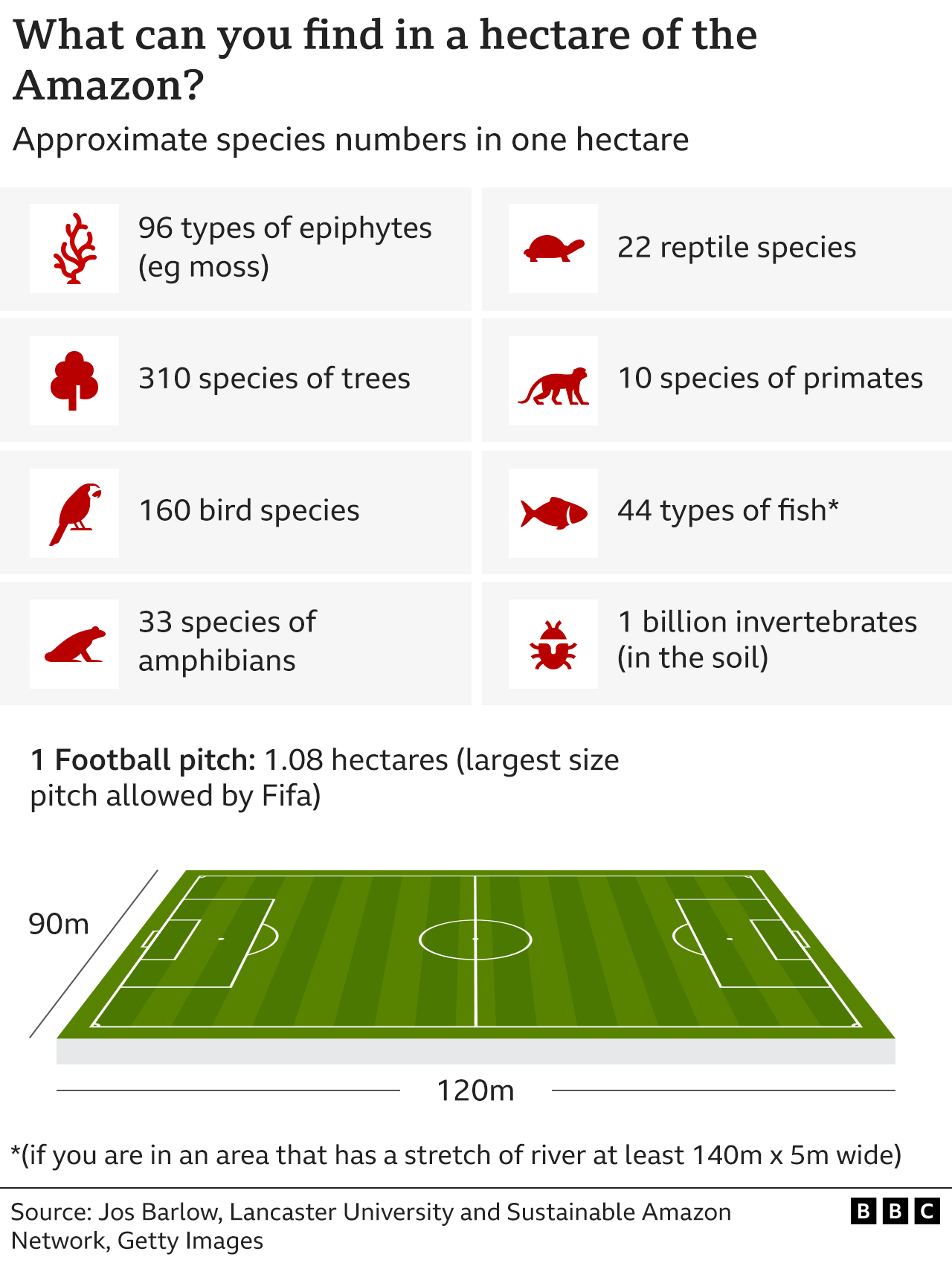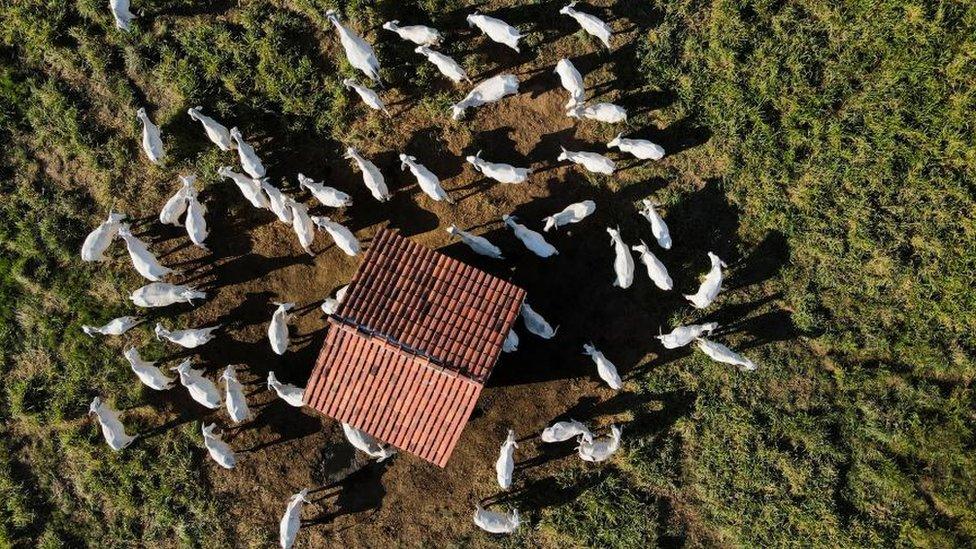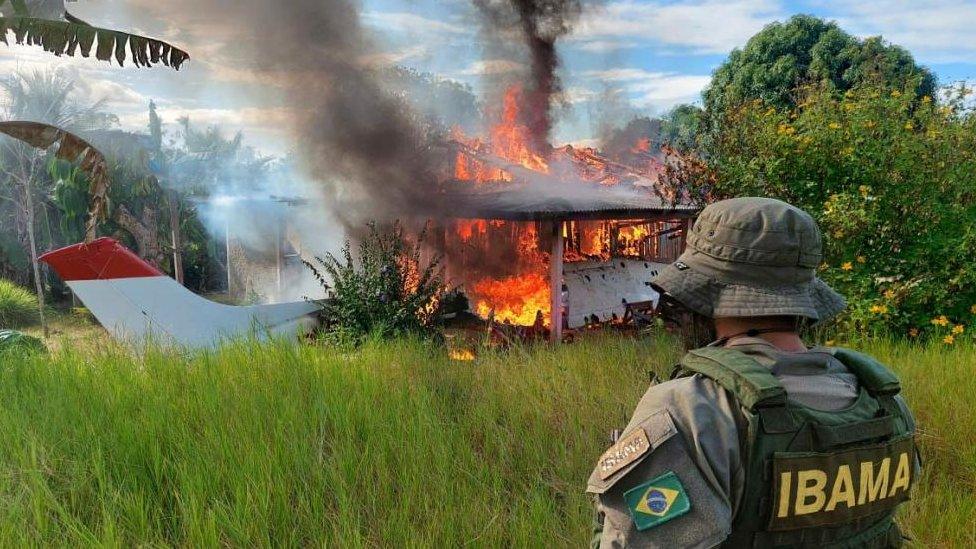Amazon rainforest: Deforestation rate continues to fall
- Published

The area burned or razed last month is 66% smaller than that in August 2022
The rate of deforestation in Brazil's Amazon rainforest has dropped by 66.1% this August compared to the same month last year, satellite data from space research agency Inpe suggests.
The news comes after a similar fall was reported in July.
The reduction is particularly notable as August is historically one of the months when deforestation is at its highest.
The rainforest is a crucial buffer in the fight against climate change.


Inpe data suggests 563 sq km (217 sq miles) of it were cleared in August 2023, down from 1,661 sq km in August last year.
The Brazilian environment minister said the new government of President Luiz Inácio Lula da Silva had been key in bringing about the fall.


"These results show the determination of the Lula administration to break the cycle of abandonment and regression seen under the previous government," Marina Silva said.
Lula came into office in January this year.
Rainforest destruction had surged under his predecessor, Jair Bolsonaro, who promoted mining in indigenous lands and cut the resources of the agency tasked with protecting the environment.
Mr Lula's government says it is committed to stopping deforestation completely by 2030.
On Tuesday, the president announced the recognition of two new areas as protected indigenous lands as part of his efforts to safeguard the Amazon.
They are located in the states of Acre and Amazonas, in Brazil's north-west.
Almost 60% of the Amazon rainforest is located in Brazil.
Last month, President Lula hosted leaders from the eight countries that share the Amazon basin at a summit in the city of Belém.
The participants agreed to the creation of an alliance to fight deforestation but failed to negotiate a joint goal for conservation.
- Published9 August 2023

- Published3 August 2023

- Published9 February 2023
